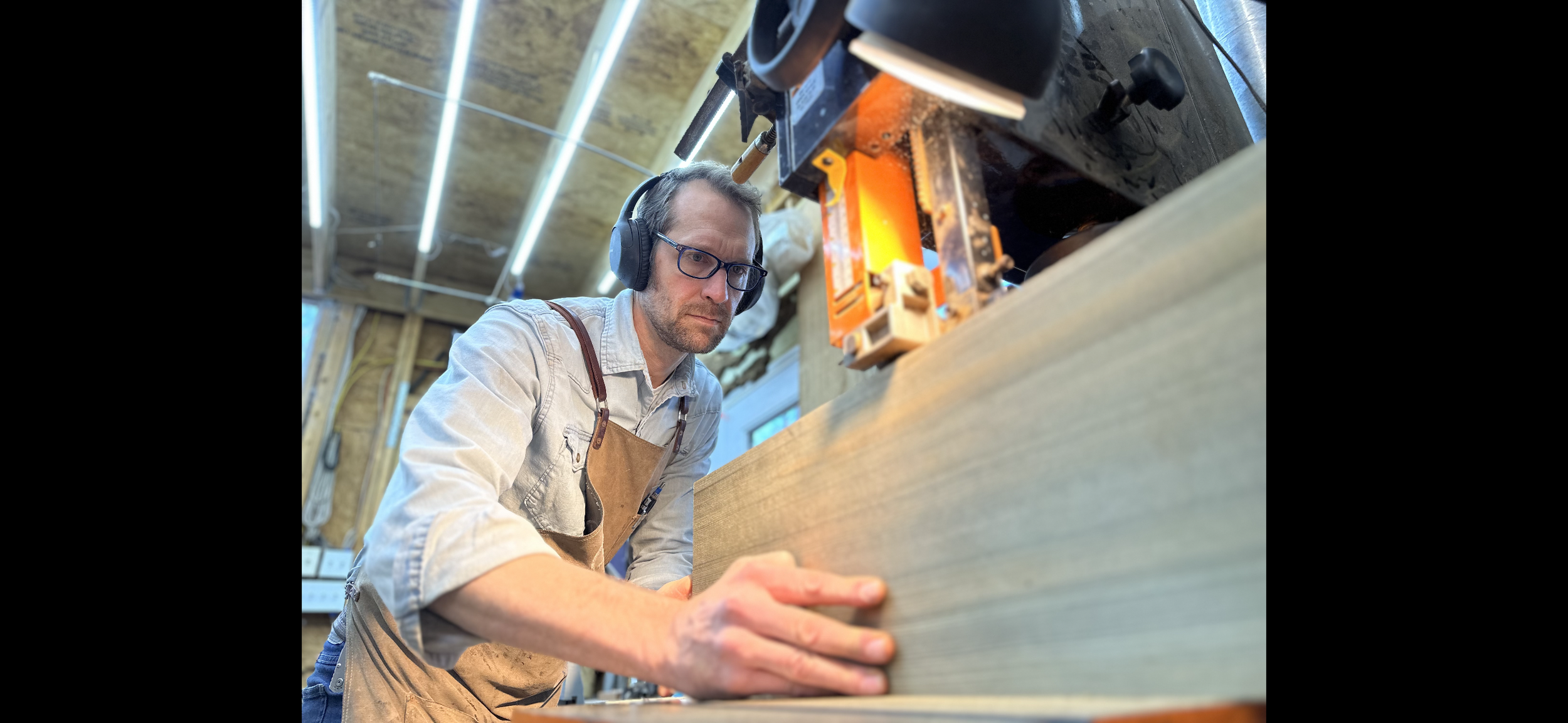How did Dark Forest Cypress come to be?
The Universe seems to have spent decades slowly guiding Aaron. Trees grow slow and skills and knowledge take time. The diverse range of seemingly unconnected lifelong pursuits culminated with a focus on tone woods and lutherie.
While running a sawmill Aaron was introduced first hand to the world of sinker timber. With the onset of staff shortages, Covid dissipating and a growing family, Aaron decided to return to his own shop but with a new focus, Acoustic Guitars using alternative and sustainable tone woods. Responsible material sourcing has always been a big part of his business and while researching the kaleidoscope universe of Lutherie, it seemed Bald Cypress might be a great new addition to the wood locker of builders.
Understanding that aged wood offered stability to the builder, both physically and tonally, Aaron thought that sinker Cypress might have even more to offer.
Firstly, Aaron needed to roughly determine if Bald Cypress had properties in any way similar to the industry standard top woods. This meant research and an excuse for Aaron to start buying more wood!!! The purpose being to have hands on comparisons, instead of just numerical data gathered via industry resources.
Knowing that every log is different, numerical industry data was still important to see if the species even fell close to acoustic guitar soundboard choices, basic data chart below.
While Aaron was creating the numeric chart he was comparing high grade industry woods, from reliable Luthier sources, to handle next to the 12 or so different sinker cypress samples he had collected.
Once Aaron had convinced himself that he was not completely out of the ball park with the notion that, Bald Cypress could be a viable tone wood, he needed to get some real world feedback.
Having read through as many books on lutherie as possible, certain names kept appearing within the industry, as go to pillars of knowledge. Aaron proceeded to contact a slew of individuals around the world, all considered world class instrument builders, to get their thoughts on the material.
Various samples of varying grades and ages were sent out to find what was preferred and or not preferred within the species, helping to dial in the desired characteristics of the species.
Now, the culmination of years of research has resulted in the “Dark Forest Cypress” and our hope is that you enjoy it as much as we do.



